
DENTOMAXILLOFACIAL RADIOLOGY
Scope & Guideline
Empowering Professionals with Cutting-Edge Radiology Insights
Introduction
Aims and Scopes
- Innovative Imaging Techniques:
Focus on the development and evaluation of advanced imaging modalities such as Cone Beam Computed Tomography (CBCT), magnetic resonance imaging (MRI), and their applications in diagnosing various dental and maxillofacial conditions. - Artificial Intelligence and Machine Learning:
Integration of AI and machine learning methodologies to enhance image analysis, automate detection, and improve diagnostic accuracy in dentomaxillofacial radiology. - Clinical Applications and Outcomes:
Research on clinical implications of imaging techniques in dental practice, including treatment planning, surgical outcomes, and patient management. - Radiation Safety and Dose Management:
Investigation into radiation exposure levels, dose optimization strategies, and safety protocols associated with different imaging techniques. - Radiomics and Texture Analysis:
Exploration of radiomics and texture analysis for improved characterization of lesions and conditions, facilitating more precise diagnoses.
Trending and Emerging
- Deep Learning and AI Applications:
A significant increase in studies utilizing deep learning algorithms for image analysis, detection, and classification tasks, showcasing the potential of AI to revolutionize diagnostic processes. - Radiomics and Predictive Modeling:
Emerging interest in radiomics, where detailed quantitative features from imaging are analyzed to predict disease outcomes and treatment responses, indicating a shift towards personalized medicine. - Multimodal Imaging Approaches:
Growing trend towards combining different imaging modalities (e.g., CBCT with MRI or PET-CT) to enhance diagnostic accuracy and provide comprehensive assessments of complex conditions. - Patient-Centric Research:
Increased focus on research that emphasizes patient outcomes, satisfaction, and safety in the context of imaging, reflecting a broader trend towards patient-centered healthcare. - Minimally Invasive Techniques:
Emerging interest in imaging techniques that support minimally invasive procedures, particularly in surgical planning and assessment of treatment efficacy, aligning with modern surgical philosophies.
Declining or Waning
- Traditional Radiography Techniques:
There is a noticeable decrease in papers focusing solely on conventional radiographic techniques as the field shifts towards more advanced imaging modalities that provide enhanced diagnostic capabilities. - Basic Diagnostic Studies:
Research centered around basic diagnostic studies without the integration of advanced technologies or AI is becoming less frequent, indicating a shift towards more sophisticated and technology-driven approaches. - Non-quantitative Studies:
There seems to be a decline in non-quantitative observational studies, as the emphasis moves towards quantitative and data-driven research methodologies that provide measurable outcomes.
Similar Journals

KOREAN JOURNAL OF RADIOLOGY
Elevating Standards in Radiological ResearchKorean Journal of Radiology (ISSN: 1229-6929, E-ISSN: 2005-8330), published by the Korean Society of Radiology, stands as a leading international platform for the dissemination of high-quality research and advancements in the fields of radiology, nuclear medicine, and imaging. With a remarkable impact factor and ranked in the Q1 quadrant in its category, this journal showcases cutting-edge studies, clinical investigations, and comprehensive reviews that significantly contribute to the understanding and practice of medical imaging. Researchers, clinicians, and students alike will find the journal an invaluable resource, featuring innovative methodologies, case studies, and essential updates in imaging technology. Since its inception in 2000 and continuing through 2024, the Korean Journal of Radiology remains dedicated to promoting excellence and fostering collaborative research within the global radiology community, underscoring the importance of imaging in modern medicine.
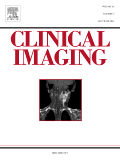
Clinical Imaging
Transforming Imaging Science for Clinical ExcellenceClinical Imaging, published by Elsevier Science Inc, is a renowned journal dedicated to the field of radiology, nuclear medicine, and imaging. With an ISSN of 0899-7071 and an E-ISSN of 1873-4499, this esteemed publication has established its significance in advancing imaging science since its inception in 1989 and continues to make impactful contributions to the discipline through 2024. The journal holds a prestigious Q2 ranking in the category of Radiology, Nuclear Medicine, and Imaging, reflecting its critical role in bridging research and clinical practice. Currently ranked #113 out of 333 by Scopus, with a notable 66th percentile, it offers a platform for disseminating high-quality research, reviews, and case studies that inspire innovation and enhance imaging techniques. Although it primarily functions as a subscription-based journal, it remains dedicated to accessibility and the dissemination of pivotal findings that inform both academia and clinical settings. Clinical Imaging is essential for researchers, professionals, and students alike, offering insights that shape the future of diagnostic imaging.

SA Journal of Radiology
Fostering Collaboration: Uniting Voices in Radiological ScienceThe SA Journal of Radiology is a prominent open-access journal published by AOSIS, dedicated to advancing knowledge in the fields of Radiology and Ultrasound Technology. Established in 2004, this South African journal provides a platform for researchers, professionals, and students to disseminate valuable findings and share innovative practices in medical imaging. With an ISSN of 1027-202X and an E-ISSN of 2078-6778, the journal has become an important resource for those involved in radiological sciences, despite currently holding a Q4 ranking in both Radiological and Ultrasound Technology and Radiology, Nuclear Medicine and Imaging categories. Covering a converged time span from 2014 to 2024, the journal aims to promote scholarly communication and enhance the accessibility of research, positioning itself as a key player in the global radiological community. In a landscape where open access is increasingly critical, the SA Journal of Radiology is committed to fostering research collaboration and facilitating the exchange of ideas among clinicians and academics alike.
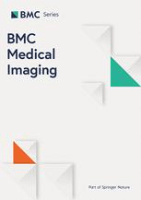
BMC MEDICAL IMAGING
Empowering Researchers and Clinicians in Medical Imaging.BMC Medical Imaging is a premier open-access journal dedicated to advancing the field of radiology, nuclear medicine, and imaging technologies. Published by BMC in the United Kingdom, this journal serves as a vital resource for researchers, clinicians, and students, fostering a collaborative environment for sharing innovative findings and methodologies in medical imaging. With a commendable impact factor and an impressive Scopus ranking within the top 35% of its category, BMC Medical Imaging provides a platform for high-quality research to be disseminated widely and freely since its inception in 2001. The journal aims to cover a diverse array of topics, from advanced imaging techniques to their clinical applications, enhancing the understanding and effectiveness of diagnostic practices. By contributing to the body of knowledge and facilitating open access to research, BMC Medical Imaging plays a pivotal role in shaping the future of medical imaging and improving patient care.

JOURNAL OF COMPUTER ASSISTED TOMOGRAPHY
Advancing Diagnostic Imaging through InnovationJOURNAL OF COMPUTER ASSISTED TOMOGRAPHY, published by Lippincott Williams & Wilkins, stands as a vital resource in the field of Radiology, Nuclear Medicine, and Imaging. Since its inception in 1977, this journal has been dedicated to advancing the understanding and application of computer-assisted tomography, emphasizing innovative research and clinical practices that enhance diagnostic imaging techniques. With an impact factor reflective of its rigorous scholarship and relevance—ranking in the Q3 category—the journal serves as an essential platform for contributors and readers alike, navigating the challenges and opportunities within a rapidly evolving field. Researchers, professionals, and students are encouraged to engage with the rich repository of articles that cover emerging technologies, clinical applications, and theoretical advancements, collectively fostering a deeper comprehension of imaging sciences. Although not currently designated as an open-access journal, it continues to enhance discourse in the community from its headquarters in Philadelphia, PA, maintaining a commitment to the highest standards of academic excellence.
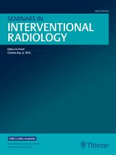
SEMINARS IN INTERVENTIONAL RADIOLOGY
Pioneering Insights in Minimally Invasive MedicineSEMINARS IN INTERVENTIONAL RADIOLOGY, published by Thieme Medical Publishers Inc, is a pivotal peer-reviewed journal in the fields of interventional radiology, cardiology, and cardiovascular medicine. With a legacy spanning from 1984 to 2024, this journal serves as an essential resource for professionals seeking to advance their understanding of minimally invasive procedures and imaging techniques. Although it operates under a non-open access model, SEMINARS IN INTERVENTIONAL RADIOLOGY is committed to disseminating high-quality research and clinical insights, thus contributing to ongoing developments in effective medical practices. It enjoys a respectable position within the academic community, indicated by its 2023 rankings of Q3 in both cardiology and radiology categories, reflecting its relevance and influence in the respective fields. This journal not only addresses current trends and challenges but also aims to foster collaboration among researchers and clinicians, emphasizing the importance of evidence-based practices in improving patient outcomes.

EUROPEAN JOURNAL OF RADIOLOGY
Exploring the Frontiers of Medical ImagingThe European Journal of Radiology, published by Elsevier Ireland Ltd, is a premier peer-reviewed journal in the fields of radiology, nuclear medicine, and imaging. Established in 1981, it has carved a significant niche within the academic community, showcasing innovative research that enhances medical imaging practices and improves patient care. With an impressive ranking in the Q1 category for both Medicine (miscellaneous) and Radiology, Nuclear Medicine, and Imaging in 2023, the journal is recognized globally for its commitment to advancing scientific knowledge and improving imaging methodologies. The journal's Scopus ranking of #60/333, placing it in the 82nd percentile, underlines its reputation for high-quality research and scholarly contributions. While traditionally a subscription-based journal, it continually evolves to meet the demands of the academic landscape, aiming to bridge the gap between research and clinical practice. Researchers, healthcare professionals, and students alike can benefit from exploring its extensive archives and current publications, which are curated to foster education and innovation in the medical imaging domain.

AMERICAN JOURNAL OF ROENTGENOLOGY
Leading the Way in Radiological Science.AMERICAN JOURNAL OF ROENTGENOLOGY (AJR), published by the American Roentgen Ray Society, stands as a beacon of excellence in the fields of Radiology, Nuclear Medicine, and Imaging. With an impressive impact factor positioning it in the Q1 category of both Medicine (Miscellaneous) and Radiology as of 2023, AJR is ranked 13th out of 333 journals in its category, reflecting its prominent presence and high relevance in advancing medical imaging knowledge and practice. Established in 1973 and continuing through to 2024, the journal encompasses a broad spectrum of research, critical reviews, and innovative techniques, making it a vital resource for researchers, healthcare professionals, and students alike. Although it does not currently offer open access options, AJR ensures that its rigorous, peer-reviewed content remains accessible to a global audience committed to the evolution of radiological science. With its home base in Leesburg, Virginia, AJR not only informs but also inspires advancements in radiology, enhancing diagnostic practices and patient care globally.
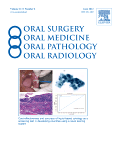
Oral Surgery Oral Medicine Oral Pathology Oral Radiology
Pioneering Knowledge in Oral Pathology and RadiologyOral Surgery Oral Medicine Oral Pathology Oral Radiology, published by Elsevier Science Inc., is a prestigious journal dedicated to advancing the fields of dentistry, oral surgery, pathology, and radiology. With an impressive impact factor positioning it in the Q2 category across multiple disciplines, including Dentistry, Oral Surgery, and Pathology, this journal is an essential resource for researchers and professionals seeking cutting-edge insights and evidence-based practices. The journal is renowned for its rigorous peer-review process, ensuring that only the highest quality research is disseminated to its audience. Although currently not adopting an Open Access model, it continues to attract a broad readership through its commitment to scholarly excellence, having ranked in the top percentiles in various scientific categories as per Scopus. The journal plays a crucial role in bridging the gap between scientific research and clinical practice, providing vital information that supports improving patient care in oral health. As it converges years of insightful published research from 2012 to 2024, this journal remains a vital resource for students, practitioners, and researchers dedicated to advancing the science and practice of oral health.
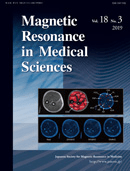
Magnetic Resonance in Medical Sciences
Elevating Medical Imaging with Cutting-edge ResearchMagnetic Resonance in Medical Sciences is a leading open-access journal published by the Japanese Society of Magnetic Resonance Medicine, dedicated to advancing the field of medical imaging through high-quality research articles and reviews. With a strong focus on radiology, nuclear medicine, and imaging technologies, this journal serves as a crucial platform for the dissemination of innovative studies, as evidenced by its impressive Scopus ranking of #75 in its category and a commendable 77th percentile standing. Since its inception in 2002 and becoming open access in 2016, it has fostered a collaborative research environment, welcoming contributions from both seasoned experts and emerging scholars alike. The journal's commitment to enhancing diagnostic techniques and patient outcomes makes it an invaluable resource for researchers, healthcare professionals, and students passionate about the transformative potential of magnetic resonance imaging. Located in Tokyo, Japan, Magnetic Resonance in Medical Sciences continues to shape the future of medical imaging through rigorous scholarship and impactful research.